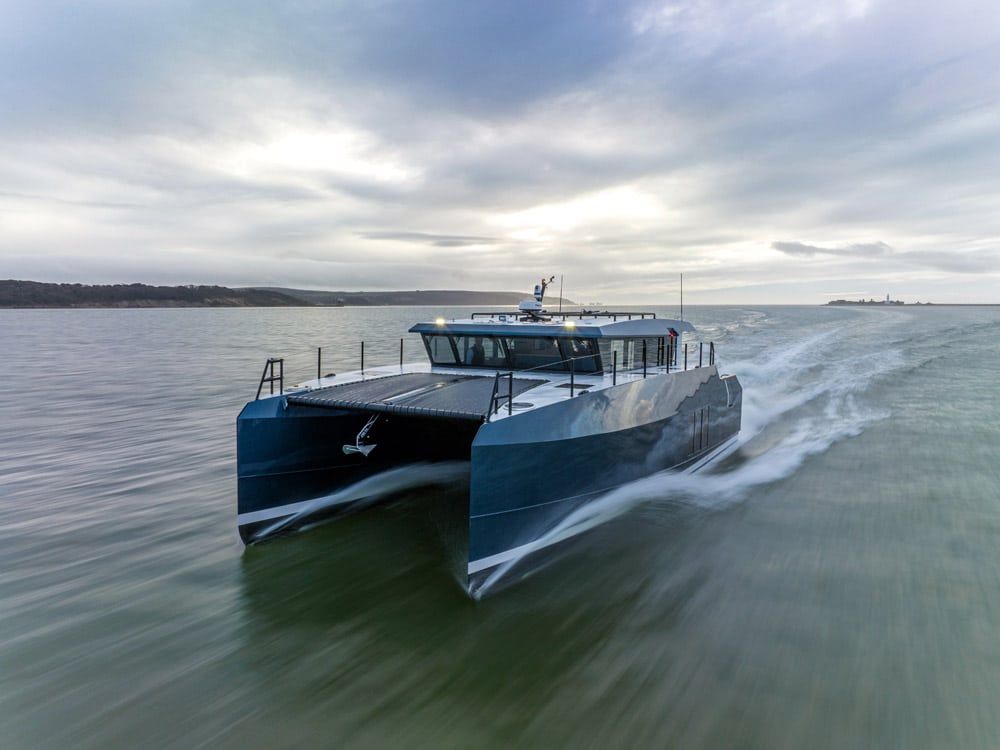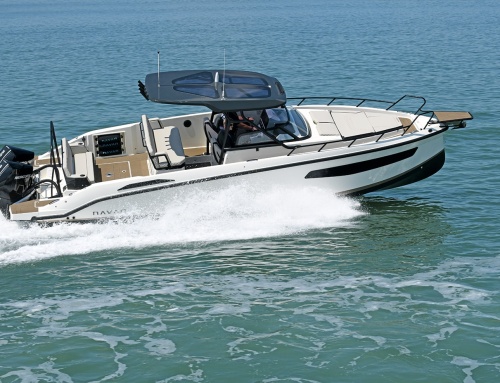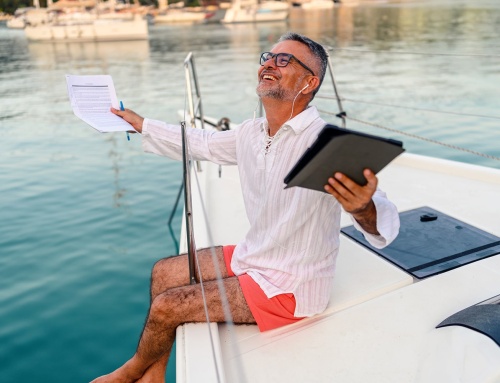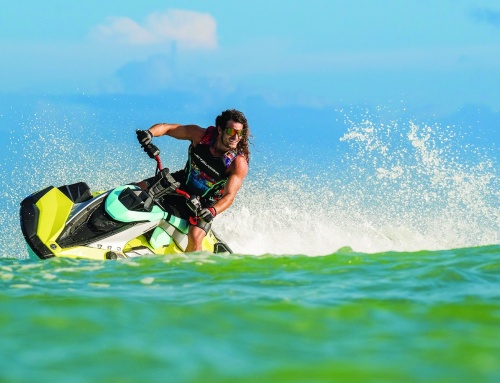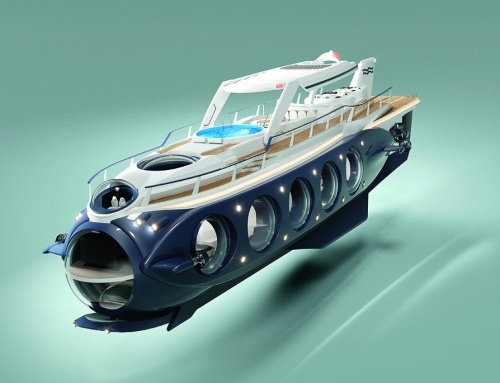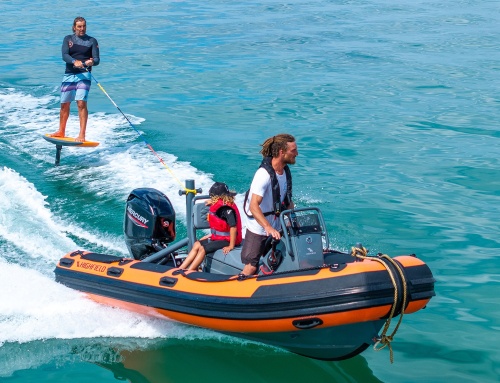In this exclusive interview, HMS speaks to Stephen Weatherley, founder and CEO of WSW Marine, about hydrogen, HVO and the development of his sustainability-focused, long-distance, hybrid-powered ‘Archipelago’ catamaran.
Could you provide some background to the Archipelago project and what inspired the company’s inception?
I started Archipelago Yachts in early 2021, ultimately because I couldn’t find a boat that I wanted on the market. I’ve always had boats in my family, sailing and motor, but I’ve always had a passion for proper seaworthiness and excellent naval architecture. My first sailing boat was a Contessa 32, which is a classic seaworthy design and sailed beautifully in all weathers. For the last 10 years or so I owned a Mitchell 31 workboat, which I shared with my father.
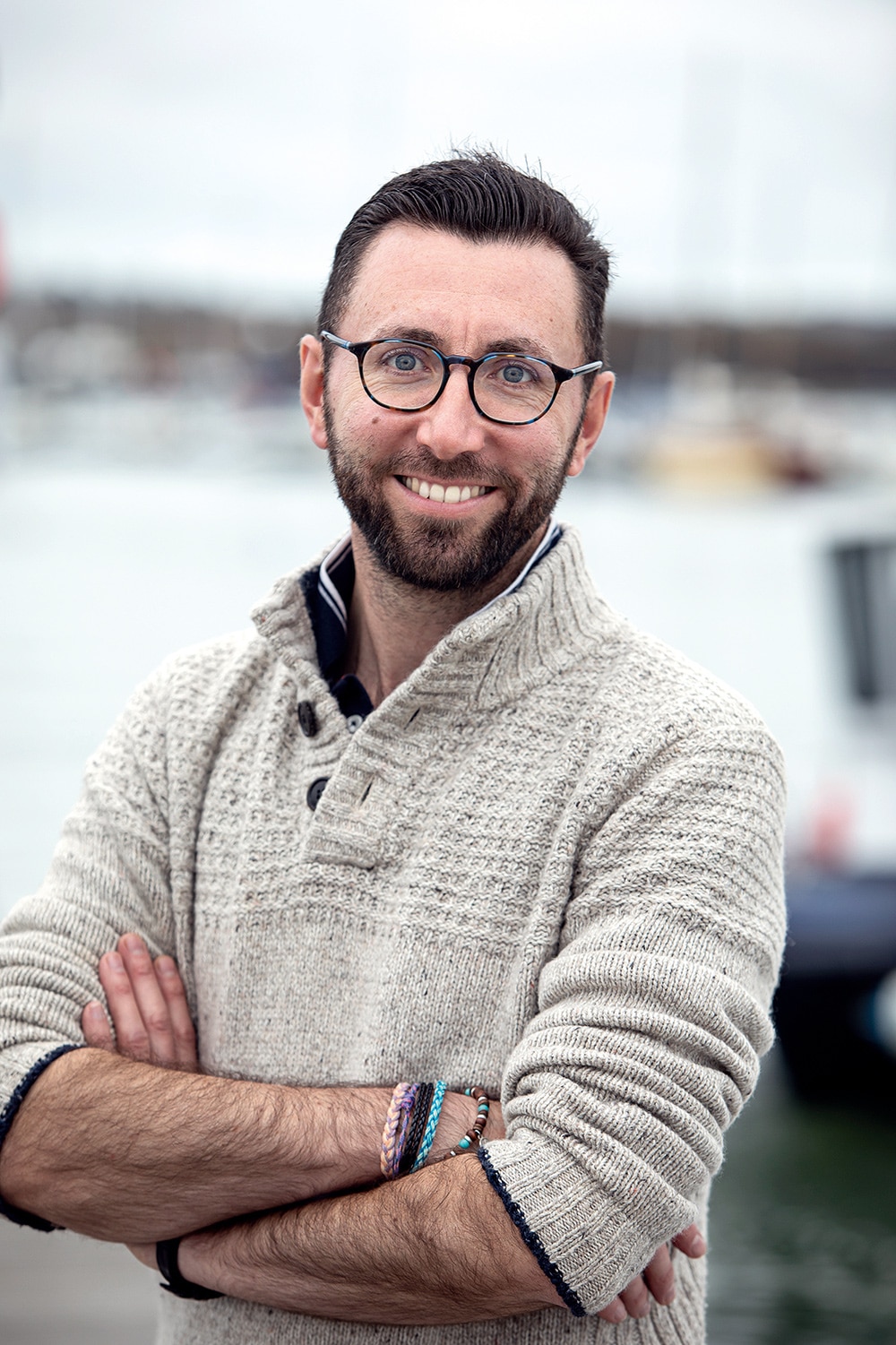
Stephen Weatherley, founder and CEO of WSW Marine.
Unfortunately, in late 2020 he passed away and it made me reassess boating and what I wanted to get out of it. I have four young kids in my family and the Mitchell was starting to get a bit small, so I started looking around. I wanted a boat that blended commercial heritage with a leisure interior feel. There are many in the monohull world (e.g. Lochin, Botnia Targa, even Nordhavn in some ways), but I couldn’t find anything in the multihull world that did the job. There are plenty of commercial multihulls, and plenty of luxury multihulls, but nothing that really blends the two in an effective way. I approached a few naval architects and the team at Chartwell Marine really blew me away with the design – so much so that I thought there was a potential business opportunity. Hence, I started Archipelago – by raising some initial capital and getting the first boat built!
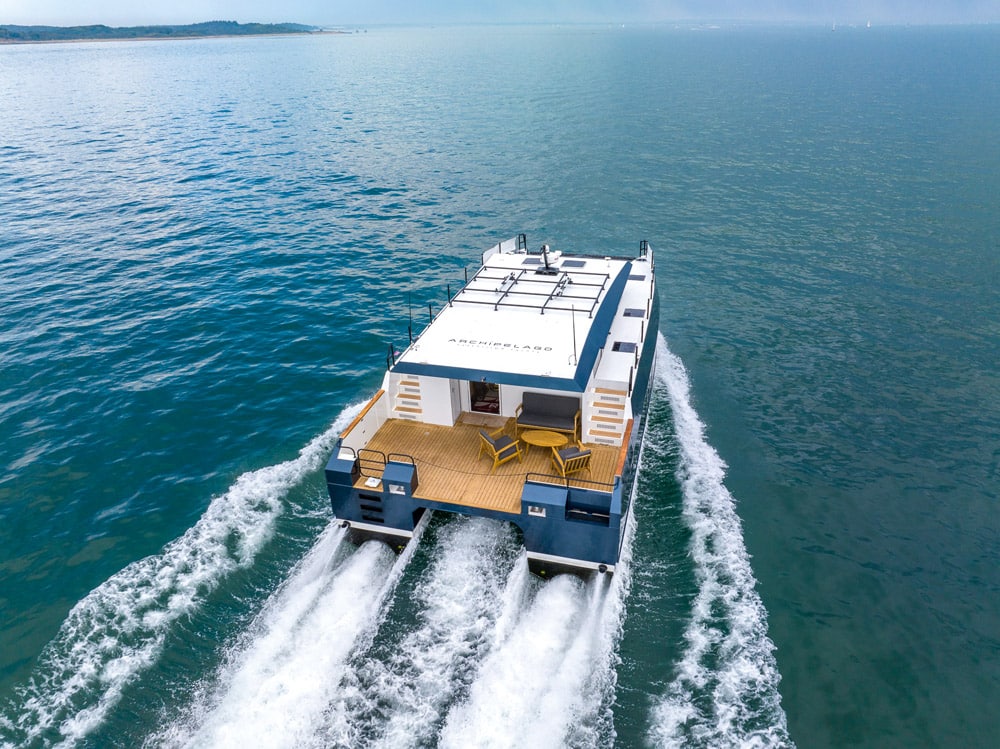
You have specifically chosen a catamaran hull design. Why this choice and who are the team behind the vessel’s design?
I wanted a catamaran for a number of reasons – most importantly to be able to shut the kids in their own hull! But importantly, the catamaran hull offers a number of advantages for me – you get huge amounts of space, stability at anchor, long range and high speed. Equally, the flexibility of an aluminium design allows us to customise the vessel more than a composite boat. The team behind the design are the award-winning Chartwell Marine. Chartwell are best known for commercial vessel design, specialising in the offshore wind (CTV) world. The hull form that we adapted for the Archipelago 47 is a tried and tested hull that we knew would perform exactly as designed and suit our purposes. Its commercial design heritage can be seen in such features as the high bridge deck, which keeps the vessel from slamming in heavy weather, which can be a significant disadvantage in less able power cat designs.
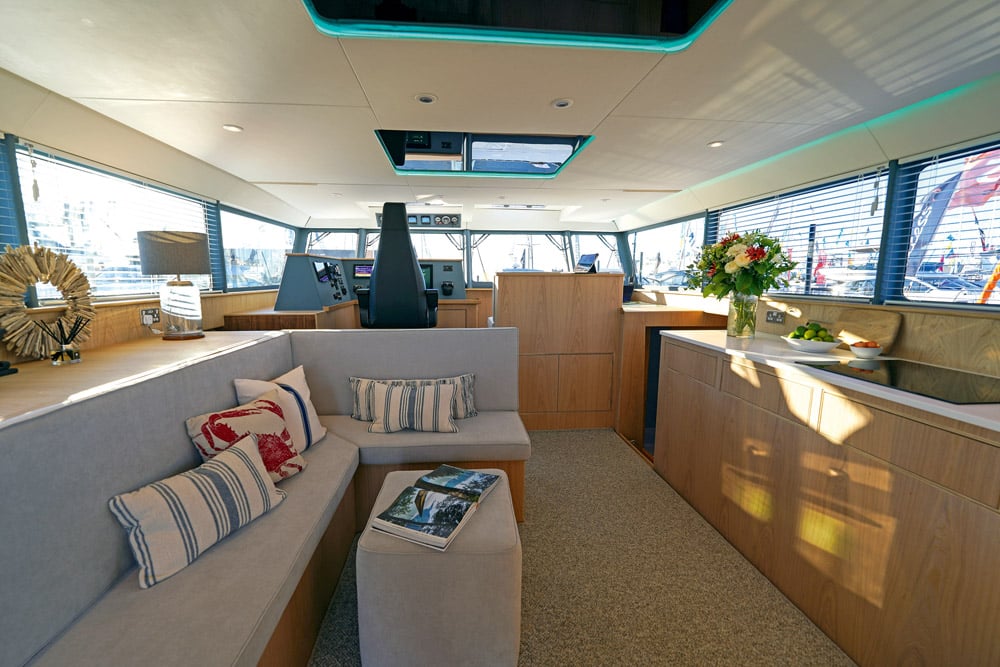
Spacious galley with L-shaped seating and almost 360 degree views.
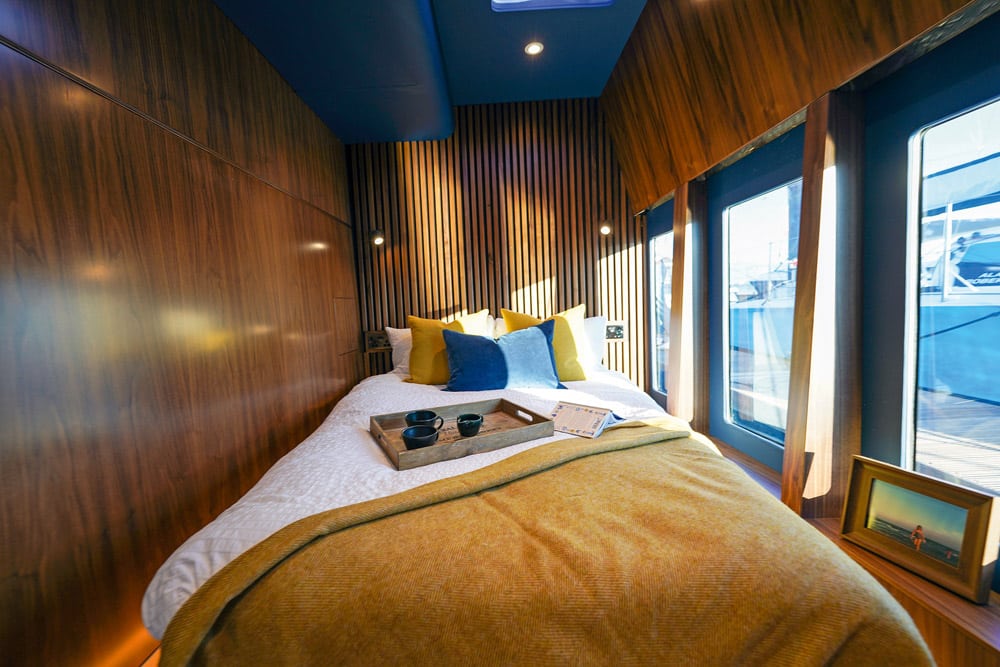
You are greeted with light and space and a double bed in the main cabin.
What is the Archipelago’s chief intended design use?
I don’t really want to pigeonhole the vessel into a specific design use. I designed it as a vessel with a long range (3000nm+) and a high speed (25 knots), and – most importantly – the ability to get you and your family home safely should the weather turn. The vessel is designed to be RCD Cat A, so it can cope with a huge variety of situations. I love the idea of doing long-range passages, but most vessels that can do long range sacrifice the ability to go fast. I wanted to blend the two into an extremely capable, versatile vessel. Although its intended use is in the leisure space, the hull and its space internally allow us to offer variants to the commercial sector.
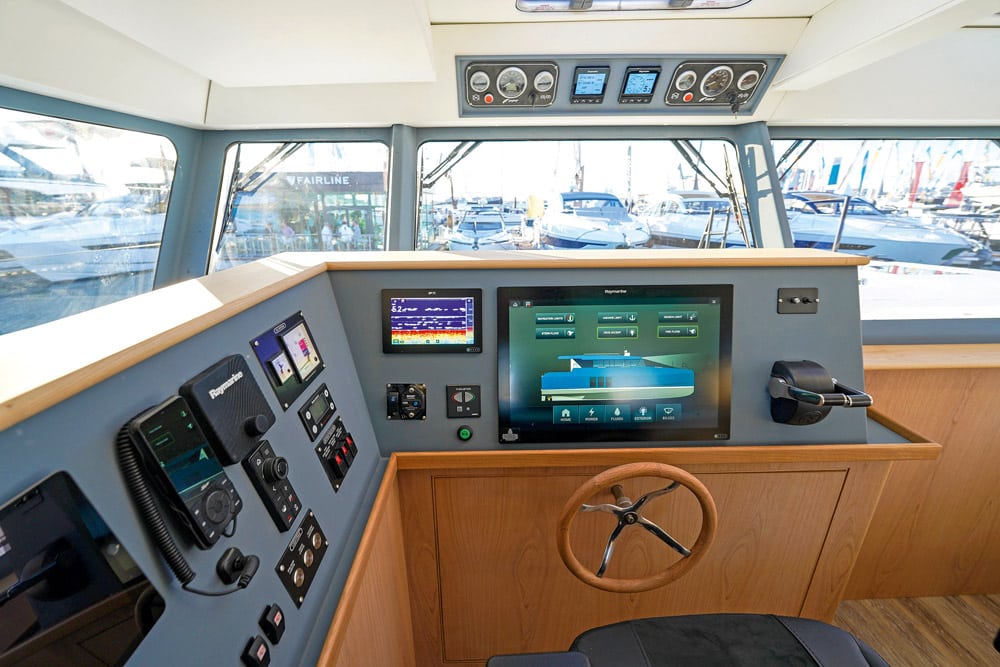
A functional well equipped helm, with very naval architecture functionality.
What do you feel is the big appeal of the adventure boating pastime and its related markets?
Much as everyone harks back to Covid, I think it did make many people reassess what they want to get out of holidays. Standard holiday destinations are getting more crowded, flights are becoming more expensive, and the ability to travel further to more remote destinations where it might be quieter and you can be more in touch with nature and a little more self-sufficient has an ever-increasing appeal. One further advantage of a catamaran for this sort of holiday is that you can lie at anchor in more comfort, or without running Seakeeper stabilisers, because of the wider beam.
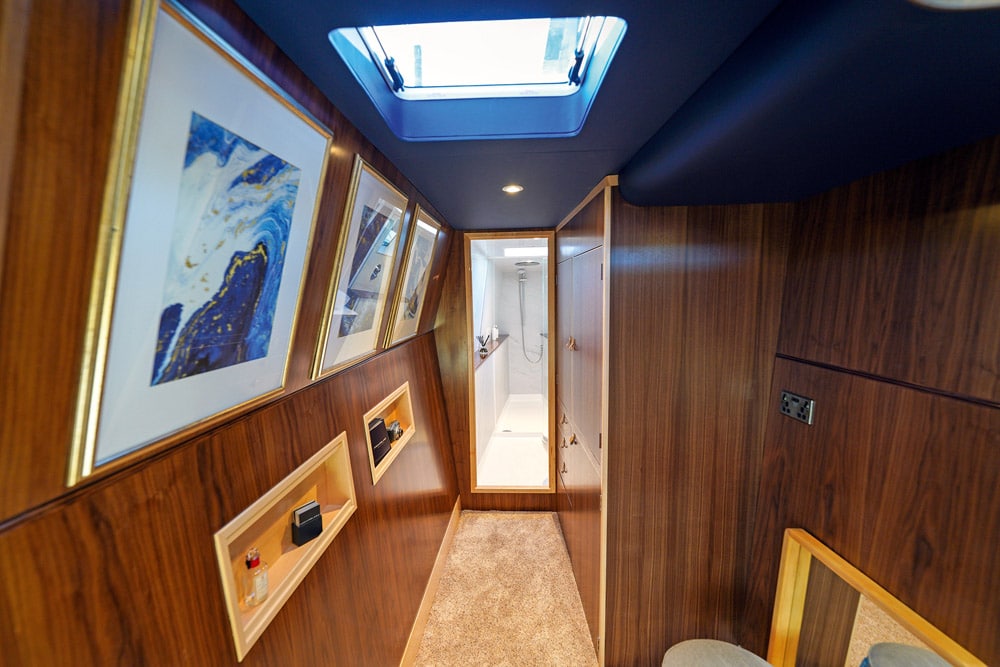
Lashings of teak, fitting with the more traditional sea-keeping vessels.
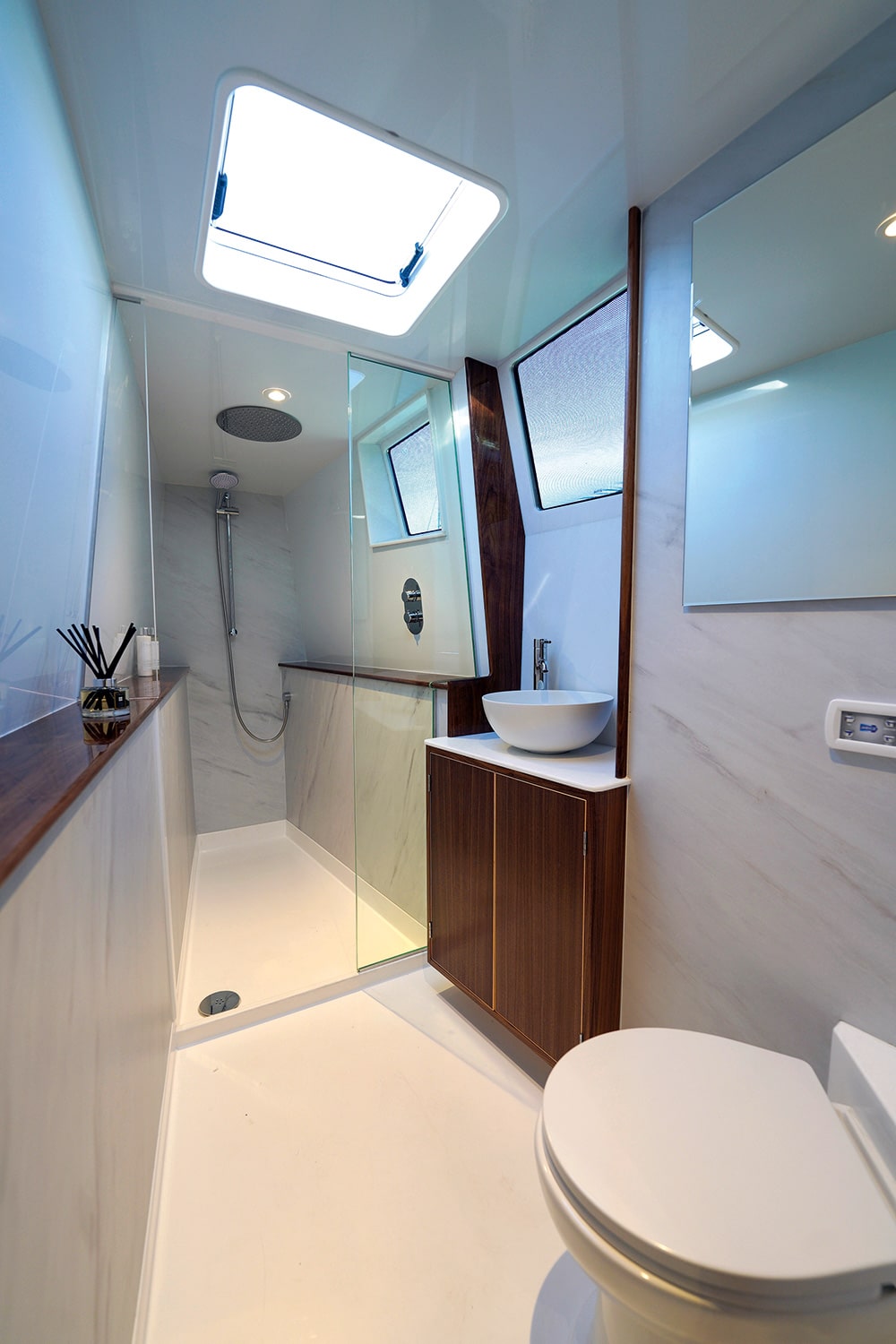
Archipelago is very much centred on sustainable building materials and technologies. Firstly, can I ask, why aluminium?
Aluminium has a number of advantages for a new boatbuilder. Firstly, you don’t need to invest in a mould, which may not, ultimately, produce the boat that customers want. Secondly, it’s a fantastic build material for producing a lightweight strong vessel – it tends to deflect and bend and not to crack like GRP, so it is well suited to the less well-travelled path. And most importantly, it is a sustainable material – the boat can be recycled at the end of its life rather than ending up in landfill. It’s difficult to be entirely sustainable when building boats, but I think it’s paramount that builders move toward using more thoughtful materials and processes as they produce their boats.
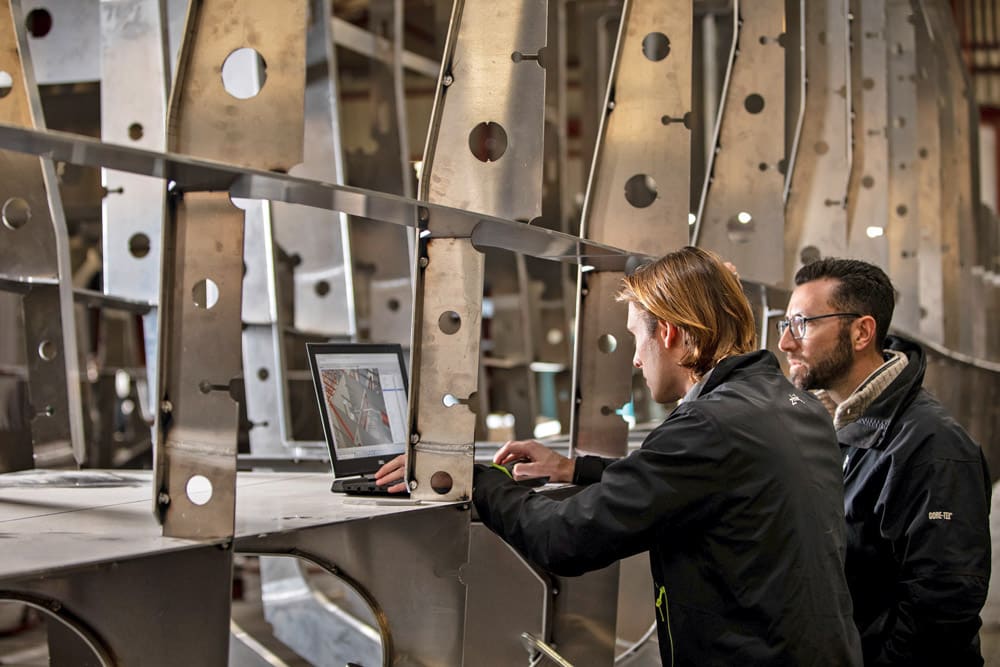
The team behind the design are the award-winning Chartwell Marine. The flexibility of an aluminium design allows full customisation of the vessel.
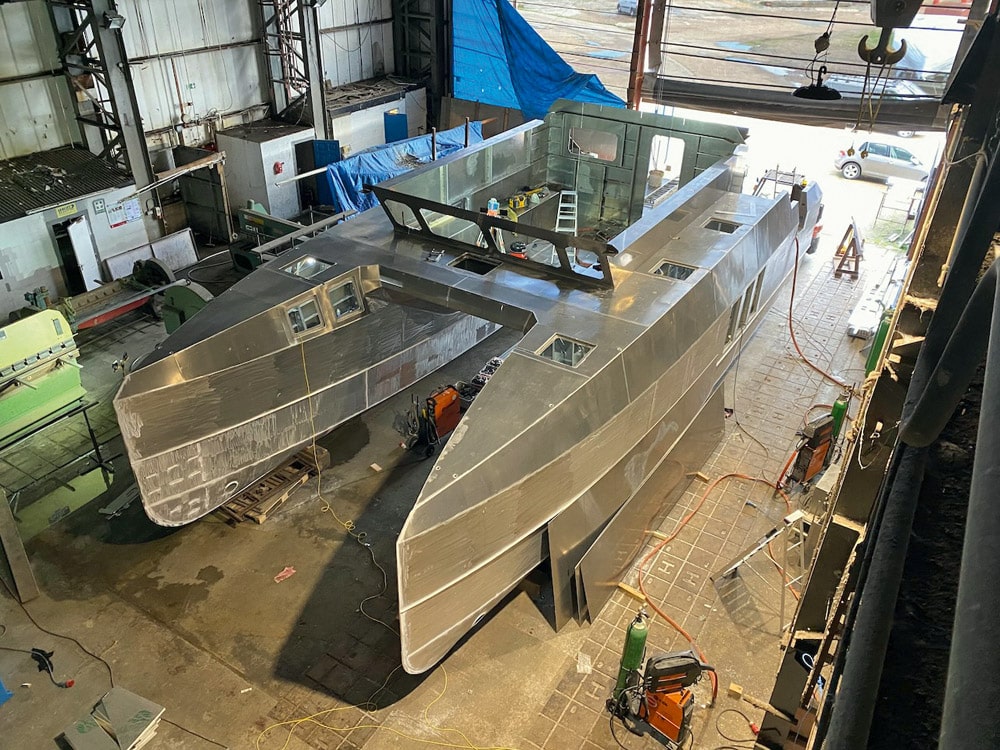
Further to this, can you tell us about your choice of propulsion, hybrid, HVO and also your interest in hydrogen power?
Our first vessel, which was a concept demonstrator, was a traditional diesel vessel with straight shafts. Ultimately, I think the longer-distance vessel market will have to stick to diesel, plus hybrid options, for quite a while longer; however, we are investing heavily in more carbon-neutral fuelling, with a special focus on methanol and hydrogen. We are currently seeing a huge amount of interest in diesel-electric hybrid vessels – in fact, the two 63s that we have on order are both diesel-electric hybrid. With a reasonable quantity of lithium ion to allow quiet, low-speed operation in and out of port, or for short distances, we can also remove the need for a generator, which means silent operation at anchor, which is very appealing for an adventure vessel. Equally, our huge roof area allows a significant solar array, which gives extra power generation for house loads and recharging the lithium while at anchor. Although hydrogen offers real advantages in terms of carbon-neutral energy generation, our view is that the only way the leisure marine industry will accept hydrogen is to transport it in a different form. The weight of infrastructure and pressures of hydrogen gas storage mean that for a leisure vessel we can’t see it being widely adopted; however, if using methanol as a vehicle to transport the hydrogen, then you have a safe, low-cost liquid fuel that can either be used to produce hydrogen or be injected straight into a traditional (modified) combustion engine.

What, in your view, are the greatest obstacles to hydrogen being taken up fully by the marine industry?
Hydrogen in its pure, gas form requires storage at very high pressures to obtain a reasonable energy density. The typical storage pressures are around 70MPa, or 700Bar, which means the infrastructure required is very heavy and potentially hazardous. Hydrogen is obviously a very small molecule and is difficult to keep contained because of such. It feels unlikely that the marine industry, and especially the leisure marine industry, are going to accept the extra weight and storage requirements for pure hydrogen. Methanol is a liquid at room temperature and pressures and can be used as an effective vehicle for storing hydrogen. The methanol can be ‘cracked’ in a reformer, which produces usable hydrogen for passing into a fuel cell. Our Archipelago zero.63, which is funded by Innovate UK, uses a combination of methanol reforming and methanol internal combustion engines to create a carbon-neutral long-distance passage-making vessel. The zero.63 will travel 2,500 miles at displacement speeds, at up to 22 knots, with a carbon-neutral footprint.
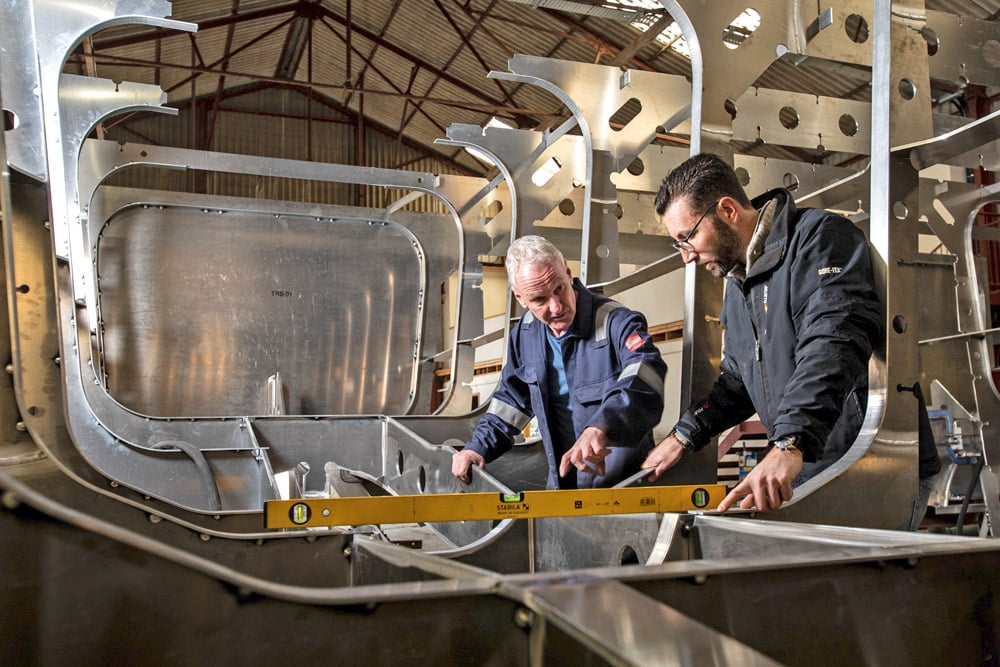
Could you please tell us about Archipelago’s relationship with Twisted and what you plan to be jointly rolling out?
The relationship with Twisted is one of the most exciting things that we are doing at the moment. The whole of the Twisted ethos is to take fantastic vehicles, both on land and on water, and make them into an even more exciting platform. The Archipelago 47 is an ultimate offshore vessel, and Twisted take it and turn up the volume. It has bigger engines, optimised engineering, unique interiors and a set of striking colours. We are focusing solely on the Archipelago 47 for now, but there could be further future collaborations.
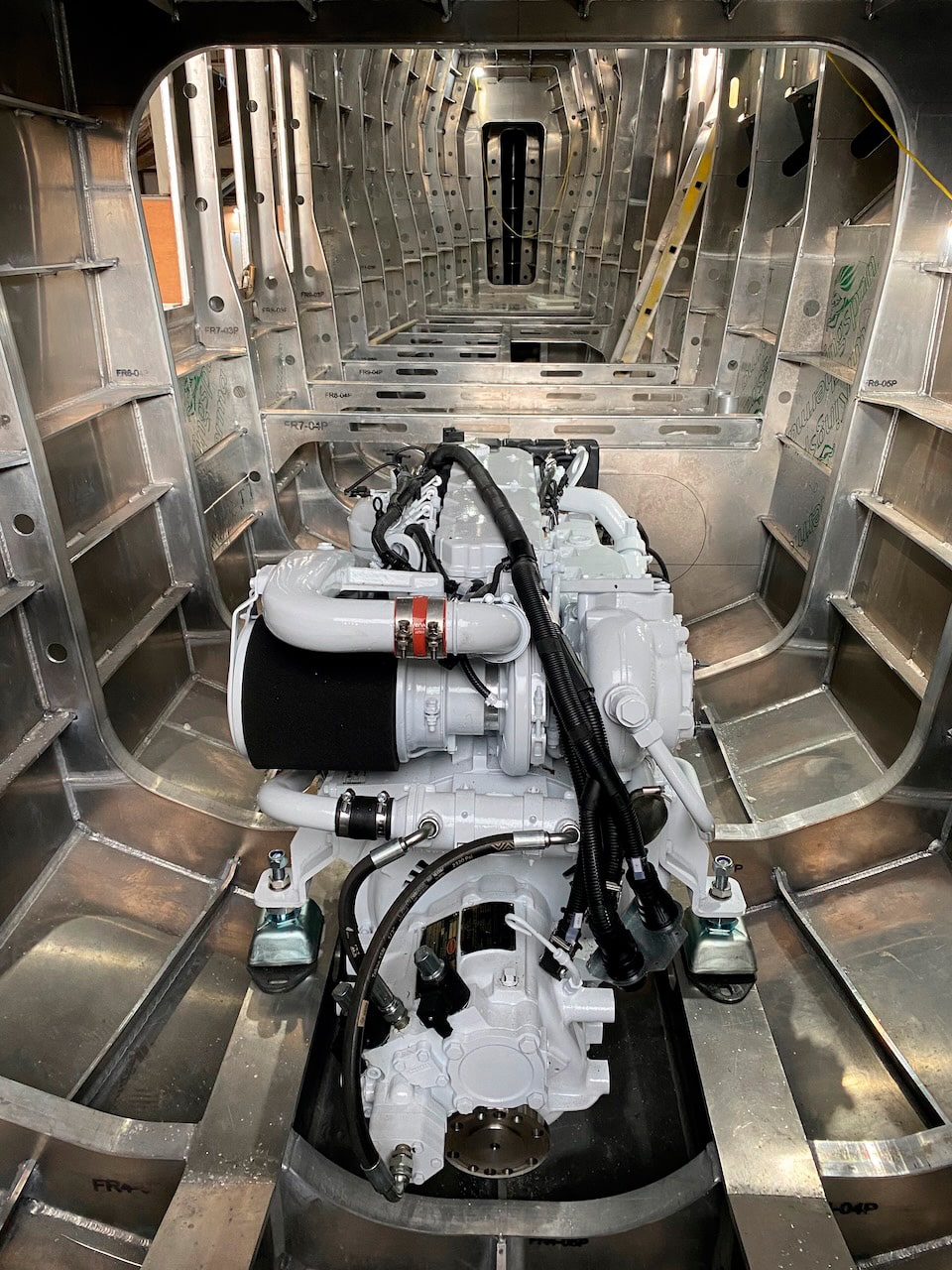
Lastly, can you tell us about your vision going forward and where you anticipate Archipelago and its key partners being in five years’ time?
We now have a finalised line-up of vessels from 40 to 80 feet, and we plan to focus on producing these to the highest quality over the next few years to ensure they can be used as exemplars for boat shows, etc.; however, our other focus is to ensure the company is producing totally carbon-neutral long-distance vessels as soon as is practical. We have now finalised designs for our zero.63 and we need to build this and demonstrate how effective it will be. This will be a long journey to persuade customers that methanol bunkering will be available.
Watch This Space
The Archipelago 47 is an ultimate offshore vessel, and Twisted take it and turn up the volume. It has bigger engines, optimised engineering, unique interiors and a set of striking colours. We are focusing solely on the Archipelago 47 for now, but there could be further future collaborations.
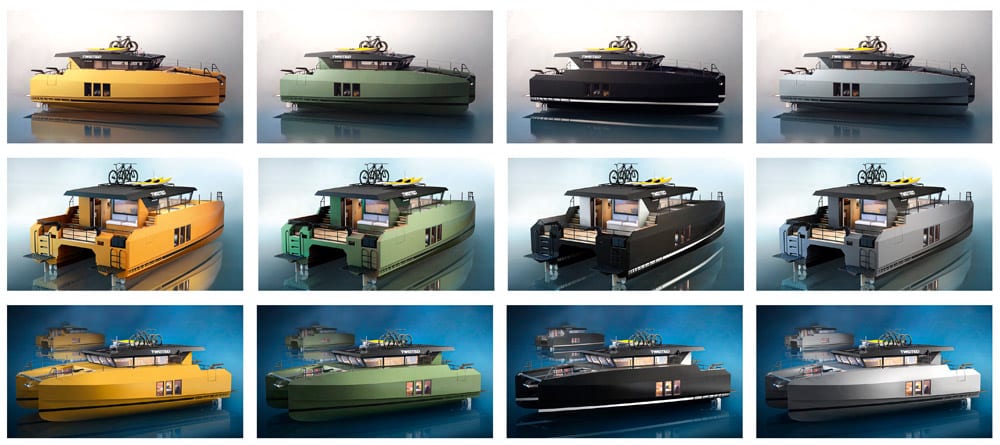
Take a look at the Archipelago and Twisted Marine collaboration

